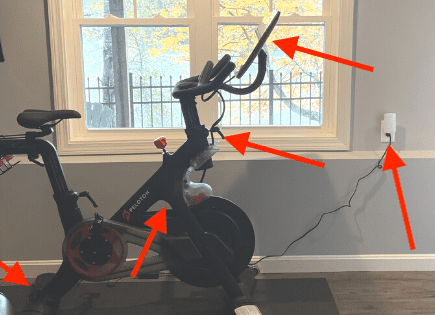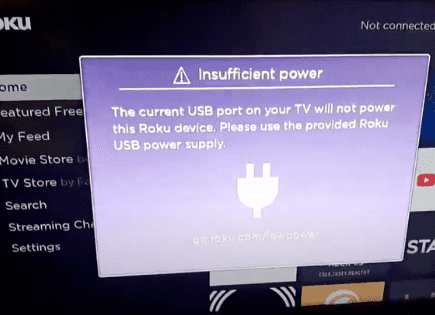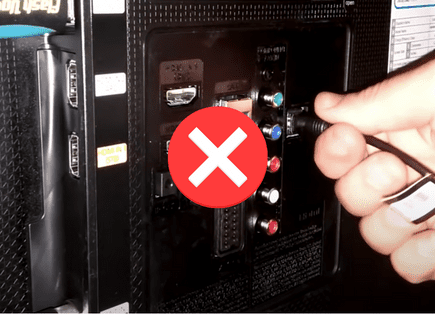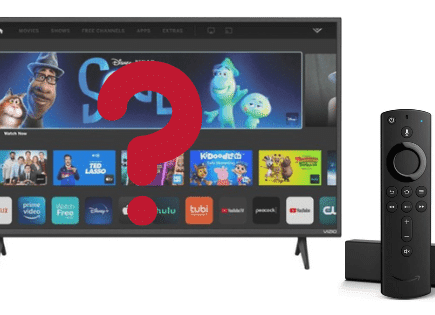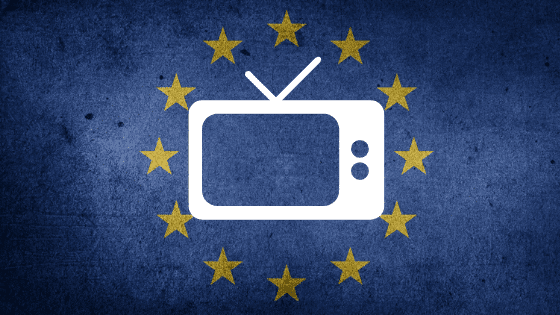
Will My TV Work In Europe? (A Comprehensive Guide)
Whether you’re moving to Europe permanently, studying abroad there, or just an oddball randomly wondering if your current TV will work across the pond, you’ve come to the right place.
Will my TV work in Europe?
Yes, your TV will work in Europe as long as you have an adapter/converter to convert from 240 volts (Europe) to 120 volts (US). You can then stream content using apps on your TV. If want cable, you’ll additionally need an HDMI video format converter to convert the format to NTSC.
However, you’ll have to consider if it is worth it considering the converters you’ll need to buy and the cost of shipping. It might be easier to sell your TV and repurchase a new one upon your arrival.

There are two main considerations when determining whether or not your TV will work in Europe: 1) the electrical system and 2) the signal transmission. Electrical differences can easily be overcome by an adapter/converter, whereas signal transmission differences can sometimes render your American TV useless in Europe.
If you have a smart TV and you’re not worried about receiving local television, then an adapter/converter is probably all you will need. You can connect your TV to the internet and stream via its apps.
That said, you may not have access to all the smart TV apps, depending on the country you’re in (setting up a VPN may be a workaround here). Be prepared for the possibility that your smart TV features may be hard coded for the US only.
If instead you want broadcast TV (via cable, over-the-air with an antenna or via satellite), you’ll likely also need an HDMI video format converter to convert the format to NTSC.
Read on for an explanation.
Electrical differences
Europe’s electrical system differs from America’s in two main ways. The first has to do with the shape of the plug and the second has to do with the voltage.
Plug Shape
In Europe, plugs have two rounded prongs, unlike plugs in the United States, which use two flat prongs.
This is solved by the “adapter” part of an adapter/converter. The adapter simply adapts your US plug so that its shape conforms to the European outlet.
Moving on, the next problem to solve will be the voltage.
Voltage
Without getting into too much detail, voltage is what makes electric charges move.
In the United States, our appliances run on ~120 volts, whereas European appliances run ~240 volts.
If you were to plug a 120-volt appliance into a 240-volt outlet, you’d most definitely destroy your appliance, likely for good. So don’t try this at home!
The “converter” part of the adapter/converter will solve this matter. When you’re in Europe, the converter converts the voltage to your TV from 240 volts to 120 volts.
Solution
All you have to do is buy an adapter/converter to ensure that you can plug your TV into a European outlet and that it receives the correct voltage!
Keep in mind, since you’re using this for a TV you should NOT buy just any adapter/converter. If you go cheap, you’ll likely get one that cannot handle the power output of your TV.
You’ll need one that’s a bit more robust and can handle more wattage.
Here is a relatively inexpensive adapter/converter that can handle up to 500 watts and will solve this conversion problem for you: VZolution Step Up & Step Down Voltage Transformer (check the price on Amazon). It gets great reviews from customers using it for this exact purpose.

Signal transmission differences
In order to talk about TV signal transmissions, we first have to cover frequencies.
Frequency
Power in the US and Europe is primarily AC or Alternating Current. Alternating current (AC) is an electric current that periodically reverses direction, in contrast to direct current (DC) which flows only in one direction.
Current is measured in cycles (also called frequency). One complete cycle is counted every time a given current travels in one direction and then doubles back on itself. The unit of frequency is called “Hertz” (Hz).
The typical power frequency in North America is 60 hertz (Hz), which means that the current is performing 60 cycles per second. The frequency in Europe however, is about 50 hertz (Hz).
These days, this power frequency difference isn’t a big deal for modern appliances, since their power supplies can handle this difference without any adverse effects.
One major exception is TVs.
But the problem this causes for your TV has nothing to do with circuitry and everything to do with signal transmission standards.
If the voltage is correct, you won’t damage the circuitry of a modern American TV by plugging it into a 50Hz power supply, but the TV’s picture quality will be negatively impacted and difficult to watch.
Signal formats
Back in the day when TVs were a new thing, standards (or signal formats) were developed that controlled how information was transmitted from the broadcast studio to your home (your TV).
Ultimately three standards were born, and they are still with us today: NTSC, PAL, & SECAM.
Every country in the world uses one of these three standards, and therefore your TV was built to work with one of them.
In the United States, we use the NTSC format, whereas Europe uses either PAL or SECAM.
| PAL | SECAM |
|---|---|
| Austria | Bulgaria |
| Belgium | Croatia |
| Cyprus | Czech Republic |
| Denmark | Estonia |
| Finland | France |
| Germany | Greece |
| Ireland | Hungary |
| Italy | Latvia |
| Poland | Lithuania |
| Portugal | Luxemburg |
| Romania | Slovenia |
| Spain | |
| Sweden |
There are quite a few differences between each of these formats, but for our purposes, there is really only one important difference that we need to understand, and that is the refresh rate.
The refresh rate is the number of times the image on the screen changes to simulate the illusion of motion, which is determined by frequency!
NTSC (America) uses a refresh rate of 60Hz (30 full frames per second), while PAL and SECAM (Europe) both use a refresh rate of 50Hz (25 full frames per second).
This difference in the way frames are transmitted by broadcasters, transferred via streaming or cable, and ultimately displayed on your TV screen, can be the distinction between your TV working, or not.
At this point, you may be wondering, “If these are old analog TV standards and most TVs now are digital, why does this even matter?“.
It’s a great question, and I won’t spend several minutes explaining it, but the unfortunate reality is that despite the fact that video is mostly digital now, current frame rates still have their roots in these old analog video formats. So, sadly, they need to be accounted for.
A possible solution to the refresh rate problem posed by the old analog standards is to buy an HDMI video converter.
Solution
HDMI video converters will convert the signal from the European PAL format at 50Hz (or SECAM format), to America’s NTSC format at 60Hz. This ensures that your American TV works in Europe and is watchable (not blurry or fuzzy) at the correct frequency.
If you’re going to take this route, I recommend that you don’t go cheap. A really inexpensive video converter will lack quality and, quite frankly, just suck. You’re going to end up buying a better one anyways so you might as well get it right the first time.
I highly recommend the OREI XD-1290 HDMI Video Converter (check the price on Amazon) for the job. It provides a high-quality conversion from PAL to NTSC.

Exceptions
While an HDMI video format converter will help a lot of American TVs to work in Europe, there are some TVs that simply won’t work no matter what you do.
That’s because many US TVs are built to accept NTSC broadcasts ONLY. So even if you buy the quality converter I referenced above, your TV still won’t work. (This is unlike European TVs- almost all of which are mandated to work with both European and American broadcasts.)
You can check this by reading the TV’s owner manual for details and specifications.
Other Considerations
About two-thirds of European countries charge TV license fees.
This means that you’ll have to register your TV with the local government when you arrive and pay an annual fee for broadcast television (in some countries, like France, you’ll pay this fee even if your TV isn’t able to receive any channels). Annoying, I know.
Fees range from around €50 to €350 a year.
Yet another cost to owning a TV in Europe…
Will my TV work in Germany?
Yes, your TV will work in Germany as long as you have an adapter/converter to convert from 230 volts (Germany) to 120 volts (US). You can then stream content on your TV. If you want cable, you’ll also need an HDMI video format converter to convert from PAL (Germany) to NTSC (US).
(Scroll up to see the exact step-down converter and HDMI video format converter that I recommend you buy. If you don’t do your research on these, you’re very likely to run into issues!)
Final thoughts
In general, I don’t suggest people moving to Europe from the US bring their TVs with them.
Shipping costs are typically extremely high. So with just that info alone, you’re most likely better off leaving your TV behind.
If the shipping costs are not a deterrent, then maybe buying the adapter/converter and the HDMI video format converter, and setting them both up, is a good choice.
Furthermore, depending on which European country you end up in, you’ll probably have to pay an annual TV licensing fee.
If you’re still adamant about bringing your TV with you, go for it. I hope this post was informative and has you on the right path.
Good luck and thanks for reading!

